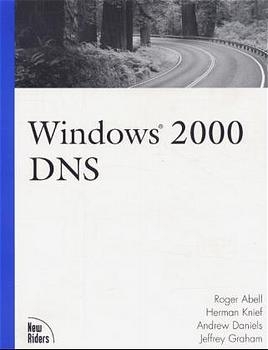
Windows 2000 DNS
Sams Publishing (Verlag)
978-0-7357-0973-7 (ISBN)
- Titel ist leider vergriffen;
keine Neuauflage - Artikel merken
The Domain Name System is a directory of registered computer names and IP addresses that can be instantly located. Without proper design and administration of DNS, computers wouldn't be able to locate each other on the network, and applications like email and web browsing wouldn't be feasible. Administrators need this information to make their networks work. Windows 2000 DNS provides a technical overview to DNS, WINS, and how to design and administer them for optimal performance in a Windows 2000 environment.
Herman Knief is a Senior Technical at Narus Communications, Inc. He¿s provided system and network administration services for various clients, including Netcom and Bay Networks. Herman¿s broad system architecture and administration background includes GTE Government Systems Corp, The USC/ISI office at the Defense Advanced Research Projects Agency (DARPA), and the Corporation for National Research Intiatives (CNRI). Jeffrey Graham has been working with computers for most of his life. Windows, UNIX and other operating systems are where he has finally settled for a career. Jeffrey works as a senior systems administrator/manager for Taos Mountain, Inc. Jeffrey has worked in large scale enterprise environments with DNS, Sendmail, NIS, LDAP, and other enterprise-wide services. Andrew Daniels has been involved with systems and network administration for more than eight years. While attending school at Indiana University, he was responsible for a portion of the university¿s network and systems administration. Since then, he has focused on enterprise-level systems, networks, and security installation and administration.
I. UNDERSTANDING THE DOMAIN NAME SYSTEM.
1. Introducing the Domain Name System.
2. How DNS Works.
3. Name Server Types.
4. Domain Information Details.
5. Dissecting Name Queries.
6. Working with Service Providers.
II. USING THE WINDOWS 2000 DNS SERVER.
7. Dynamic DNS and the Active Directory.
8. Working with BIND Servers.
9. Designing Your DNS Servers.
10. Security Issues.
11. Configuring Windows DNS Servers.
III. SUPPORTING DNS SERVICES IN WINDOWS.
12. Troubleshooting Tools and Utilities.
13. Best Practices and Maintenance Tasks.
14. Windows Client Configuration and Resolution.
15. Windows DHCP Services.
16. WINS: Legacy Name Services and Resolution.
17. NetBIOS: Legacy Name Services and Resolution.
IV. APPENDICES.
Appendix A: The LMHOSTS and HOSTS Files.
Appendix B: RFCs Related to DNS.
Appendix C: Top-Level Internet Domains.
Appendix D: Registering Addresses on the Internet.
Appendix E: Sample Network Traces for DNS Resolutions.
Appendix F: Resource Records and the InterNIC Cache File.
Appendix G: Using IPv6.
Appendix H: Multihomed Windows Servers.
| Erscheint lt. Verlag | 26.4.2000 |
|---|---|
| Überarbeitung | Jeffrey Graham, Andrew Daniels |
| Verlagsort | Indianapolis |
| Sprache | englisch |
| Gewicht | 779 g |
| Themenwelt | Informatik ► Betriebssysteme / Server ► Windows |
| Informatik ► Betriebssysteme / Server ► Windows Server | |
| Mathematik / Informatik ► Informatik ► Netzwerke | |
| ISBN-10 | 0-7357-0973-4 / 0735709734 |
| ISBN-13 | 978-0-7357-0973-7 / 9780735709737 |
| Zustand | Neuware |
| Haben Sie eine Frage zum Produkt? |
aus dem Bereich


